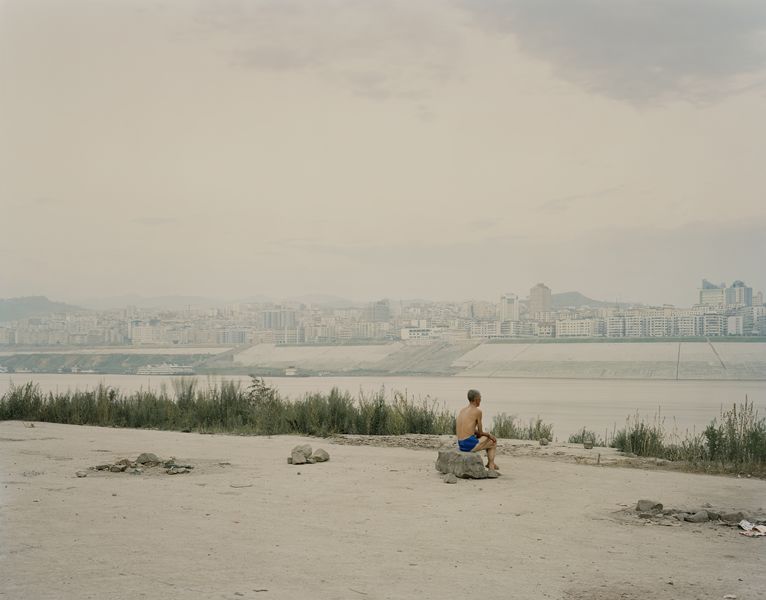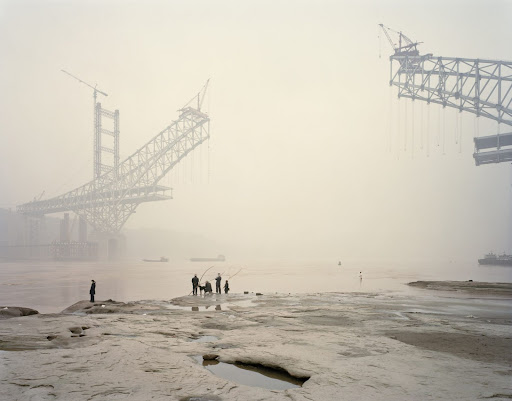
News
Cambridge Residents Slam Council Proposal to Delay Bike Lane Construction

News
‘Gender-Affirming Slay Fest’: Harvard College QSA Hosts Annual Queer Prom

News
‘Not Being Nerds’: Harvard Students Dance to Tinashe at Yardfest

News
Wrongful Death Trial Against CAMHS Employee Over 2015 Student Suicide To Begin Tuesday

News
Cornel West, Harvard Affiliates Call for University to Divest from ‘Israeli Apartheid’ at Rally
Picturing the Past and Future — The Resurgent Importance of Nadav Kander’s Journey Along the Yangtze River

“I'm not interested in truth,” Israeli photographer Nadav Kander told LensCulture in an interview over a decade ago. In a way, it was a strange comment for a photographer to make, but it was also an ultimate show of respect for the complexity of his subject.
Kander was referencing his recent project “Yangtze – The Long River,” in which he captures the unseen humanity of China’s most vital waterway amidst the nation’s rapid period of rapid economic development. This development, which began under Deng Xiaoping in the 1980s and continues in the present day, has lifted 800 million people out of poverty and constituted “the fastest sustained expansion by a major economy in history,” according to the World Bank. Still, Kander wanted to understand how this unprecedented upheaval affected ordinary Chinese citizens, which led him to make five trips to the Yangtze River over the course of three years, following it all the way from the mouth of the river to its source on the border of Tibet.
Kander implies that photography is a poor means of objectivity, preferring to use it to interrogate the world’s emotional depths. As such, it is only subliminally that his work tells the purest truth about China in the modern era: that for its millions of displaced people, the pace of modernization comes at an immense personal cost. Now, as the nation’s current property crisis unearths old questions about the relationship between development and belonging, Kander’s three-year journey along Asia’s longest river is as much a window into the present as it is to the past.
19 out of 59 photos in Kander’s project depict minuscule human figures beside behemoth-like construction projects in a visceral exhibition of the relationship between the individual and the nation. Using large-format film photography, he is able to capture the grandeur of this dichotomy with uniquely broad framing, a technique he terms “stepping back.” China’s economic miracle has produced a multitude of incredibly real, physical creations that have transformed the lives of its gargantuan population, but their construction often constitutes the loss of an old, familiar reality with a new and uncomfortable one.
In Kander’s work, many people appear lost in their own towns, removed from the life they once lived without actually leaving. According to him, the images highlight “this feeling of man as a whole as quite rootless, quite disassociated with themselves.” And in a beautiful and sacred land permanently altered by countless infrastructure changes, the cost of fantastical growth remains a mystery. By not attempting to provide answers about objective truth and instead invoking a sense of trance, Kander illuminates the only truth about China’s development: its complexity.
Also prevalent in many images is a subtle but unrelenting haze. It wafts in from over the water or the skyline to mystify what lies beyond the people in Kander’s images. In doing so, it creates portions of the images with fewer details than others, drawing the eye to the sharper, more saturated regions which typically contain individuals.
In “Chongqing XI,” this element is very apparent as a hazy, enormous, and unfinished bridge looms over people on the river bank. Although it is unclear how much of this effect is natural versus artificially created, it nevertheless highlights the obscurity of what lay ahead for a population trapped between the old and the new. At the time that these photos were taken, change had clearly arrived, as indicated by the new dams, high-rises, and bridges, but it was always unclear what these additions would look like in the context of a broader life.
Expansive fairytales do not come without a cost, and Kander’s individual stories of displacement, loss, and boundless change mesh together to create a more opaque narrative of a country turned upside down by its radically quick modernization process.

Lastly, the maritime route of Kander’s journey through China itself and the river’s resulting prevalence in his images have tremendous relation to the identity struggle he highlights. This is because although the Yangtze river is timeless, its ever-flowing nature bears a strong resemblance to the ceaseless development of China’s economy and way of life. In the same interview with LensCulture, Kander articulates this view of the river by saying “as soon as you have turned your back once it is a different river because the water has moved on.”
This phenomenon appears visually in Kander’s images. While the river flows, it passes the people of China by. Swimmers observe from docks, fishers reel in from rocky landings, and friends harmonize around a waterfront table, but all watch as the current of history carries them to an unknown place.
Now, more than 15 years later, the Chinese people have again reached uncharted waters. Now as then, Kander’s commentary on the Yangtze River sheds light on the impact of the issue. Amidst a widespread housing crisis that began with property developer China Evergrande Group’s debt default, many of the themes Kander highlighted are again front and center. This time, however, the narrative is slightly different. Currently, more than two million off-plan homes remain unfinished throughout China. And although construction and displacement have been inseparable from the country’s economic growth, now is the first time in recent memory when the human cost of development — solitude, displacement, and loss — will be futile. According to Capital Economics, roughly 30 million apartments remain unsold, with upwards of 100 million bought but unoccupied. This trend, although different in circumstance from the mass urbanization of the last 40 years, will catalyze mirror images of Kander’s work and evoke the same emotions that millions of Chinese citizens are already familiar with, but this time without the counterbalancing positive effects.
And although the figures of China’s unparalleled economic success and poverty reduction are widely interpreted, it is equally important to understand the lesser-told story of this period: the emotional side-effects of mass development. Importantly, it is by telling these stories that photography as a medium truly stands apart. To understand how Chinese citizens in the present day may think about current developments, let alone recognize the hardships of the Chinese people in achieving the success they have, it is pivotal to look to Kander’s timeless art. This is because rather than succumb to the gravity of China's collective success story, it tells a lesser-known tale — that of the nation’s ferocious movement away from its pre-miracle identity.
—Alexander J. Gerstenhaber’s Column “F4: The World in Pictures” is an appreciation of the photography that tells untold stories about the joys, hardships, and realities of the world’s people.
Want to keep up with breaking news? Subscribe to our email newsletter.
